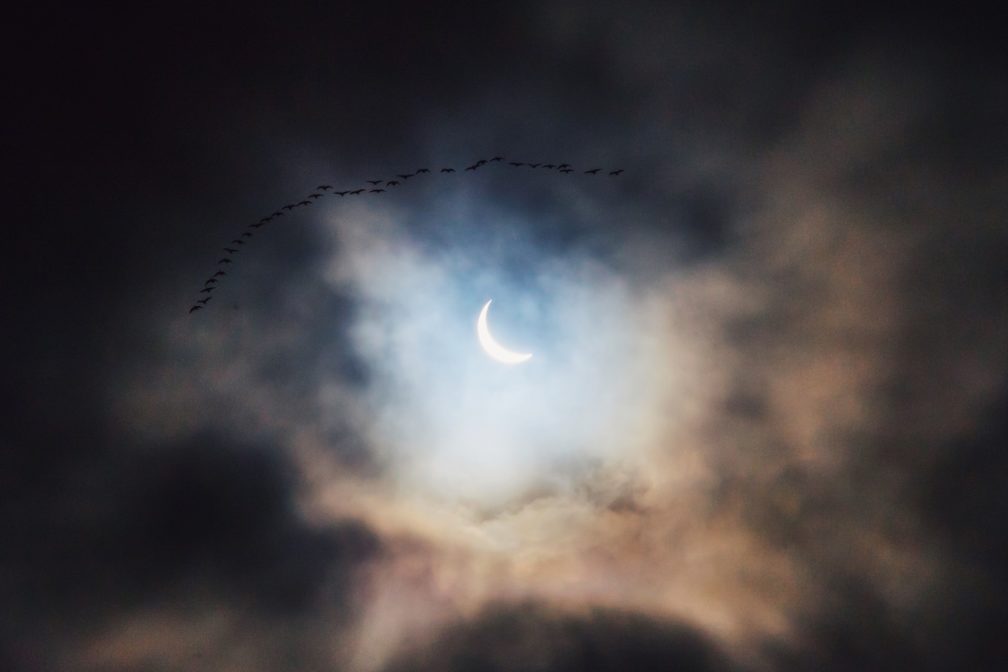Soft edges, dim light, quiet.
We awake to a foggy morning. Much discussion at breakfast; will it burn off? Should we drive inland for a better chance of seeing the sun? We decide to stay put.
As the morning progresses, the bright disk eats away our gray blanket and patches of blue appear. We are hopeful now. But when the moon begins to digest the sun, the temperature drops and the fog re-forms.
On the dune, it is even foggier but we hope to see the eclipse shadow racing across the ocean’s surface. This is the only place to do that now. I set a timer for Totality and speak with my fellow shadow seekers. We spend as much time looking seaward as we do staring at Earth’s waning star. The timer tone, crickets, sounds. A last turn to the west as a cooler breeze brings oscillating shadow bands and the soft charcoal mist of a 230,000 mile deep darkness.
Cheers erupt. Eclipse glasses are flung aside. Bare eyed we gape at coronal glory. Not the stark white blue light against a night sky that we expected. No stars appear, the fog obscures them, but in exchange gives us another gift. Refraction. Pink, blue, green and red filaments twitch and dance around the moon’s dark face. She is a Medusa satellite and for a moment we all turn to breathless stone.
At last, the fog kisses us and we awaken, perhaps with tears on our cheeks. More cheering accompanies the scramble to retrieve glasses. Then wild applause as the sun emerges, vanquishing the troublesome moon, burning away the fog and setting our seaside world aright.
Image by Paul Rysz via Unsplash



